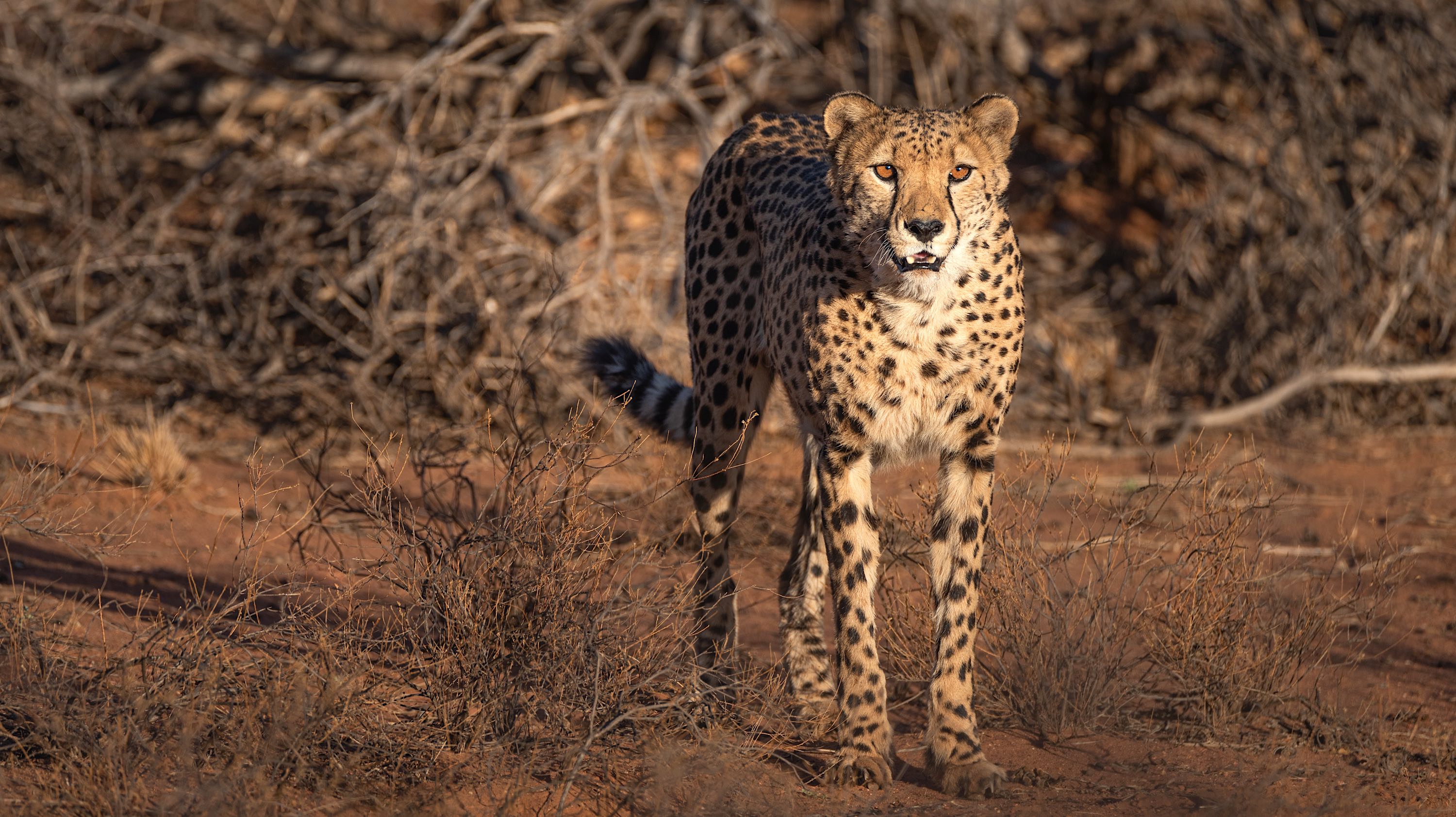
Teamwork and Science Enables Coexistence Between Farmers and Cheetahs
9th September 2021
Cheetahs are the 'black sheep' of the cat family. Their slender physique and incredible speed is totally un-catlike. Neither entirely solitary like most cat species, nor highly social like lions – male cheetahs often form coalitions whereas females are loners when not raising cubs. But their idiosyncratic habits don't stop there: they use their environment in totally different ways to other cats, and herein lies a promising solution for cheetah conservation.
Linking cheetah movements with livestock losses
Dr Jörg Melzheimer is part of the research team from Leibniz Institute for Zoo and Wildlife Research (IZW) which has been studying cheetah movements using VHF collars since 2001, and started using GPS tracking collars in 2005. Rather than keep strict territories that lie directly next to each other like other cats,
Jörg says, some cheetah males defend territories with a lot of open space in between them, whereas other males and the females have large overlapping home ranges, encompassing three to four territories. Yet cheetahs rarely come into direct contact. They nonetheless stay in touch using marking sites such as conspicuous trees that they mark with urine and faeces – the cheetah's version of Facebook.
The team found that territorial males claim a core area within their territory which contains many of these marking sites. Due to the importance of these core areas for cheetah society, the researchers call them 'communication hubs'. By spending most of their time in or near the communication hub, territorial males can keep tabs on the reproductive status of local females and discourage other males from hanging around for too long. The interesting thing is that communication hubs are very far from each other, on average 23 km
Jörg points out. This creates hotspots of cheetah activity, as all of the cheetahs within a very large area visit these marking sites regularly.
Although knowing how cheetahs use the landscape is valuable scientific information, the greatest value of this research is to help livestock farmers limit their losses to these big cats and thus find a way to coexist with them. Namibian farmers have known for many years that cheetahs use marking sites, which they call 'play trees'. Some farmers place traps around these sites to capture cheetahs and remove them from their properties. But killing or removing cheetahs this way only reduces livestock losses in the short term, because other cheetahs soon move in to take over these important communication sites.
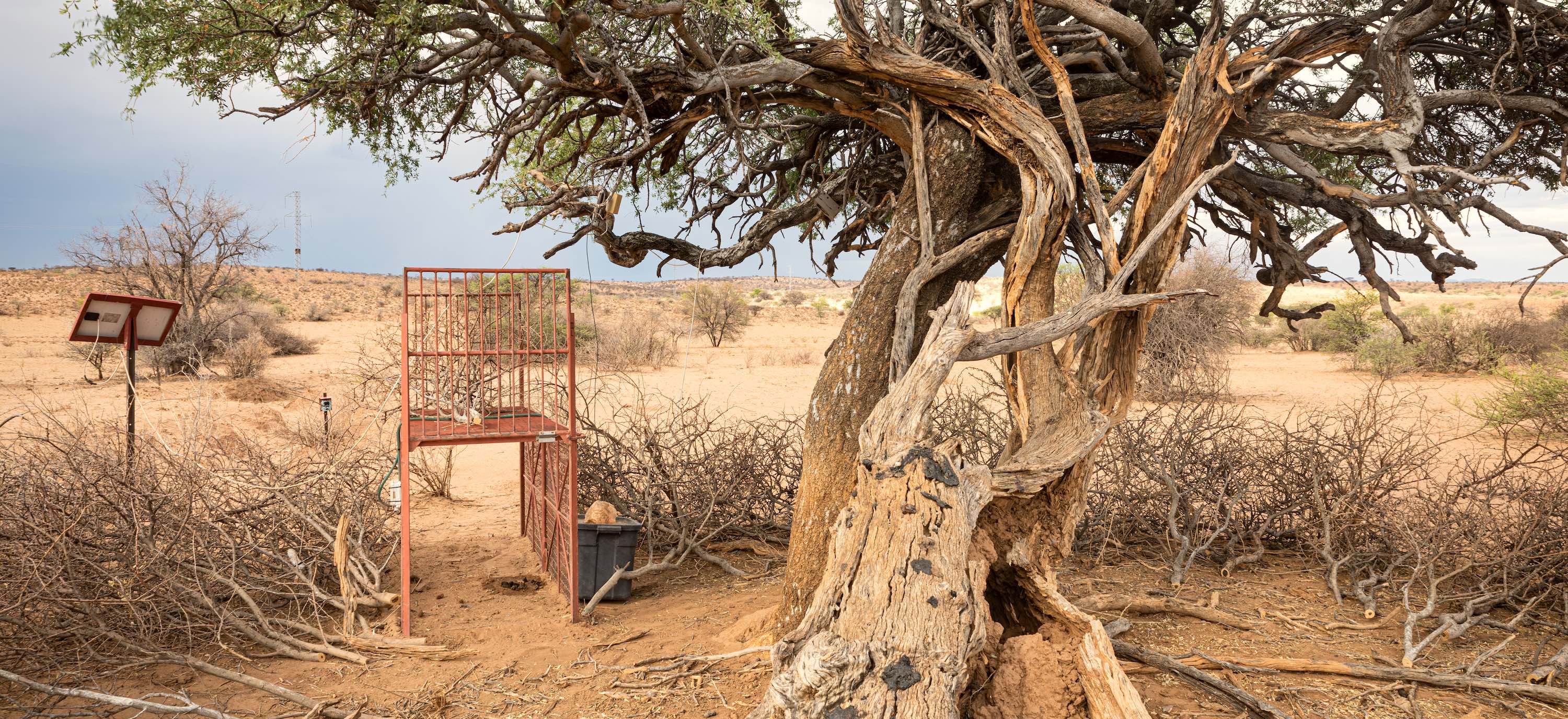
Several farmers already knew where the play trees were on their properties, as their fathers, grandfathers and even great-grandfathers had located them and passed this knowledge on to the next generation. These farmers' ancestors tried to reduce the number of cheetahs on their farms not only by killing them, but also by cutting down their play trees. This approach nonetheless failed, as cheetahs shifted to using other trees or conspicuous objects such as termite mounds. Farmers who want to reduce their losses to cheetahs in the long term therefore need to incorporate scientific information about cheetahs into their farming practices. This is where the team from IZW could help.
Building trust between farmers and scientists
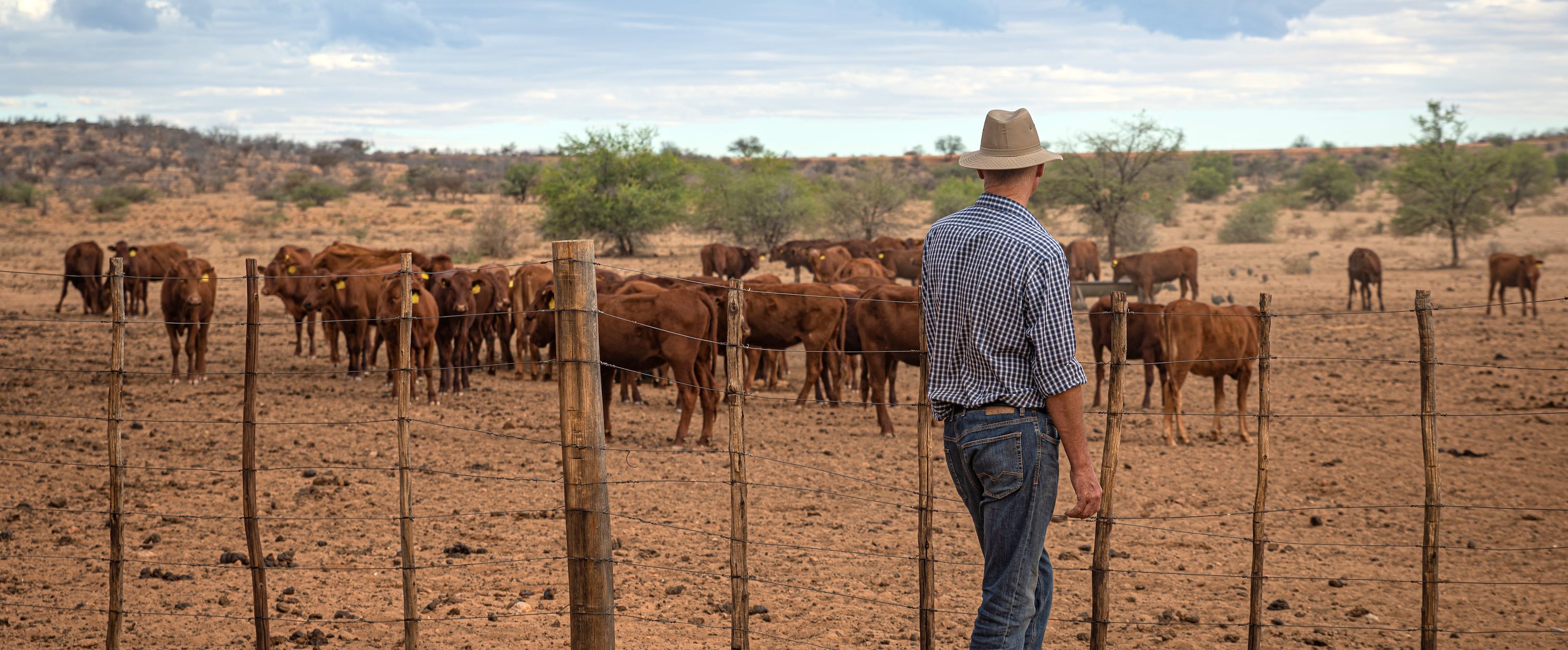
When we arrived in 2001 in our main research area between Gobabis and Windhoek, we asked the farmers what they would like to know about cheetahs,
recalls Dr Bettina Wachter, head of the IZW Cheetah Research Project. Their main interest was in cheetah movements and feeding ecology, which are the two things that most affect livestock losses.
By first asking for their input, the IZW team showed that the farmers were not just spectators, but active participants in the project. Initially we were met with a wait-and-see attitude,
Bettina remembers, but this is understandable because wildlife scientists and nature conservationists are naturally perceived as not having the cattle farmers' interests at heart.
Besides initiating their research, the IZW scientists worked hard to address biased opinions about who is 'right' or 'wrong' in farmer-cheetah conflict situations – starting with their own biases. I realised that I should be willing to walk a mile in the farmers' shoes before I could talk about their actions
, says Jörg. He learnt this quickly when he arrived in Namibia as a young greenhorn scientist motivated to change the world.
Right from the beginning the scientists' approach was to build trusting relationships with the farmers by being totally transparent about how they collected their data and what they did with it. We agreed to exchange knowledge and data throughout the project period
says Bettina, which at first meant that the farmers showed us how to capture cheetahs at marking sites, and in return we explained how we work and analyse data.
One of the most memorable requests that Bettina recalls was when the farmers wanted to learn what a p-value is, which is a statistical term that is often quoted in scientific papers as an indication of whether a result is 'significant' or not. It was fun giving the farmers a lecture on basic statistics,
she recalls, but more importantly, we revealed that there is nothing mysterious about scientific approaches.
Similarly, the scientists showed the farmers how to identify hair remains of prey animals in cheetah scats using a microscope. Taking the mystery out of science shows that nothing is being hidden behind the difficult terminology and technical methods that scientists use.
Building trust takes a long time. The farmers took a while to reveal to the scientists how many cheetahs they killed, while the scientists were initially nervous about providing exact cheetah movement data to the farmers. Nonetheless, every data exchange increased their mutual trust as each side realised that their information was only being used to achieve their common goal: finding solutions to farmer-cheetah conflict.
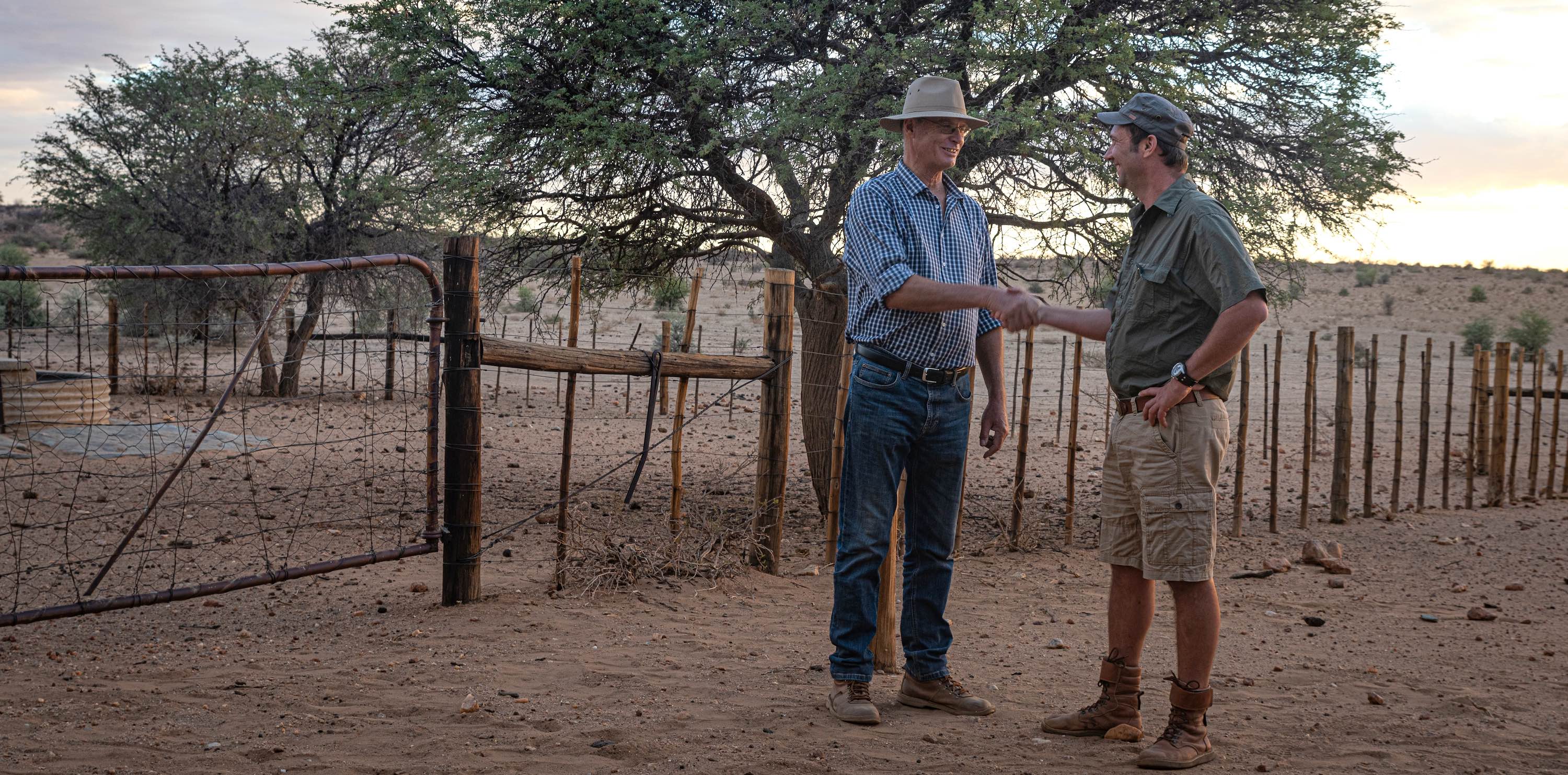
From dead cats to options for coexistence
The most difficult situations for these partners to overcome occurred when farmers killed cheetahs that were threatening their livelihoods. Jörg recalls his first encounter of this kind: In my very first week in Namibia, a farmer called us to report that he had killed a cheetah that had molested his cattle calves; he asked whether we wanted to examine the carcass for our research. When I arrived I found three dead cheetahs rather than the expected one, which was really hard for me. But I held back my emotions and instead thanked him for working with us.
Small moments such as this one had a significant impact on the project. The farmers started to realise that they had nothing to fear from the scientists' reactions to cheetah kills, while the scientists found that putting their emotions aside was the only way to collect valuable data.
From the scientific perspective, it is important to retrieve cheetah carcasses as soon as possible after death to determine the health status of these individuals. The project is not restricted to cheetah ecology, because health risks and infection prevalence are also important factors for determining population sizes and dynamics. The scientists were therefore grateful that these deaths could at least contribute to scientific knowledge.
Occasionally, some farmers would call IZW before they shot the cheetahs that they had caught, which provided an even more valuable opportunity. When receiving such calls, we would discuss the advantage of fitting a GPS collar on the animal and releasing it to reveal its movements on the farm,
explains Bettina. In many cases we were successful, but even when we were not and the farmer decided to shoot the cheetah, we dissected the animal without reproaching him.

Over the years, the IZW team have had fewer and fewer dissections to do, as farmers increasingly preferred the option of collaring and releasing the animals that they caught. By collaring these cheetahs and others they caught for this purpose, the IZW scientists were able to study the movements of more than 250 cheetahs on Namibian farms, which made it the biggest study of its kind. During this time, they discovered the communication hubs and movement patterns described earlier, which generated a new idea for mitigating the farmer-cheetah conflict. This marked an important turning point in the project – from research to practical application.
To test their idea, the IZW team planned an experiment that would require farmers with high cattle losses to move their breeding herds away from communication hubs on their farms. The first farmer who was ready to participate in this experiment was sceptical, but ready to give it a try,
remembers Jörg, He expected the cheetahs to follow the breeding herds no matter where he moved them; we had to admit that we were not sure that the plan would work, but were nonetheless eager to find out.
The experiment was highly successful: the cheetahs did not follow the breeding herds but instead preyed on the game species close to the communication hubs.
Having demonstrated their idea on one farm, the team introduced more farmers to the concept of communication hubs and showed them exactly where the hubs were located in relation to their farms. Wherever the hubs overlapped with fenced sections of the farm (known as camps), the farmer removed all young calves from that camp and put them in another part of the farm. The results were exciting – farmers were able to reduce their annual losses to cheetahs by 86%!

Reducing human-wildlife conflict is complicated but not impossible
Thus the solution to farmer-cheetah conflict is deceptively simple – keep your vulnerable livestock away from communication hubs, and your losses will decrease. Rather than taking the traditional approach of removing 'problem cheetahs', farmers need to focus on avoiding problem areas. Unfortunately it is not always so easy, as the hubs do not necessarily line up nicely with the fenced camps on the farms. Some hubs may also cover such large parts of the farm that it is difficult for the farmer to find space to put vulnerable livestock. In these cases, we advise farmers to use supplementary feeding to keep the breeding herds in safe areas of the farm, or cooperate with their neighbours to host their small calves for a couple of months until they are less vulnerable,
Jörg explains. We are willing to help each farmer tailor a solution to their own situation.
Not all farmers in Namibia are cattle farmers – some keep valuable wildlife species for trading and/or hunting. Such farmers often erect game fences of about 3.2 metres high, but cheetahs are still able to move through them. If farmers know where cheetah communication hubs are before erecting game fences, they can avoid them altogether and thus minimise their losses to cheetahs. When the game fence has already been erected and encloses either a portion of or an entire communication hub, the most successful approach might be to add an electrified wire at the bottom of the fence to prevent entry,
says Jörg. Once this is done, any cheetahs still inside the enclosure can be caught and relocated to the other side of the fence
.
Conservation scientists and farmers are concerned with human-wildlife conflict for different, yet overlapping reasons. The scientists see a complex problem that could be solved by collecting and analysing data, leading to science-based solutions. The farmers consider the same complex problem as part of the larger challenge of farming successfully, and they bring their own ideas and thoughts to the table from practical experience. The IZW Cheetah Research Project is a nice example on how to resolve a human-wildlife conflict situation by comparing notes and exchanging knowledge. Although the cheetahs have a special way of using their habitat, all carnivore species use certain areas in their home ranges more frequently than others. Identifying these areas is a promising way forward to help farmers coexist with other carnivore species, too.
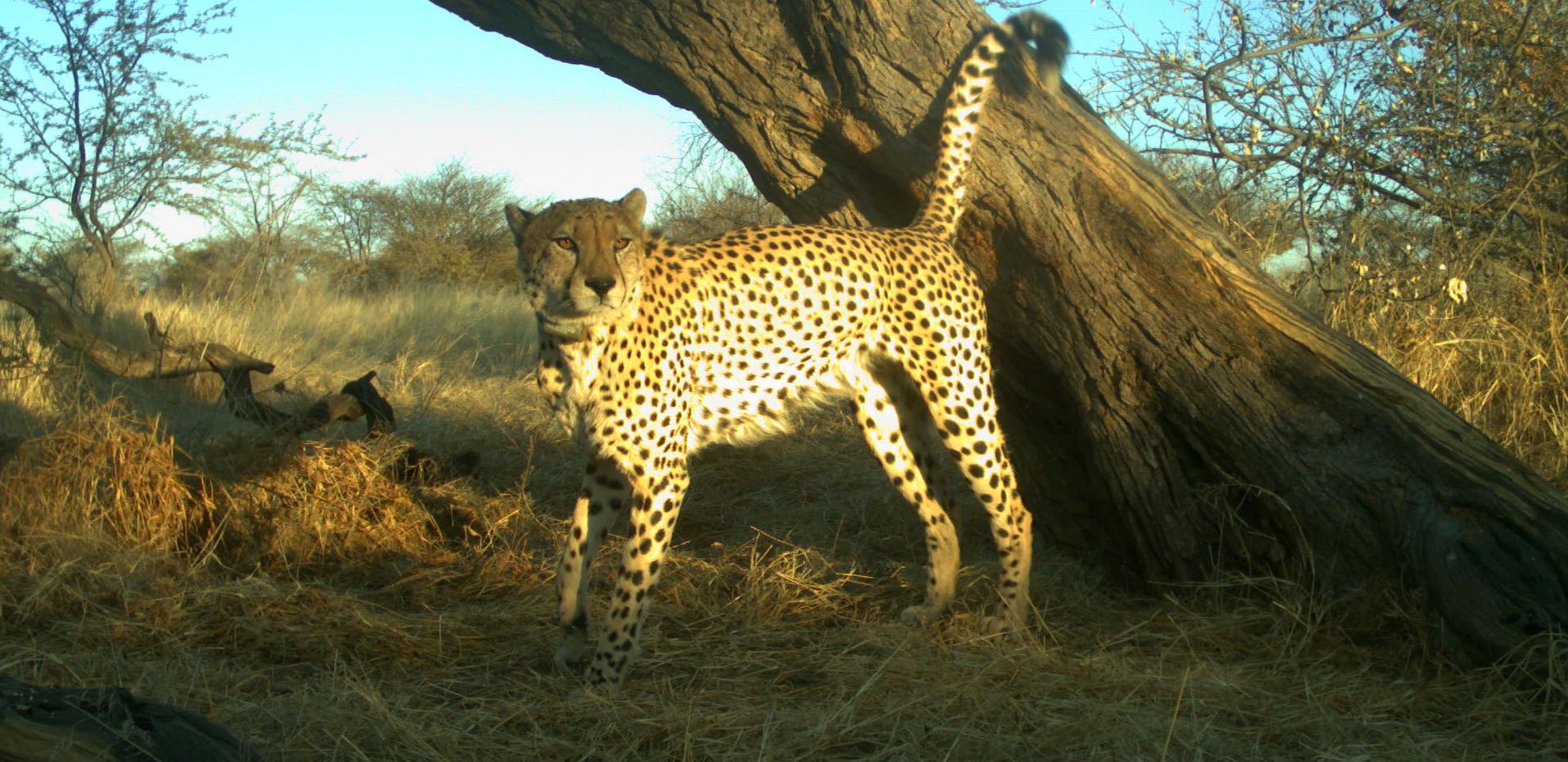
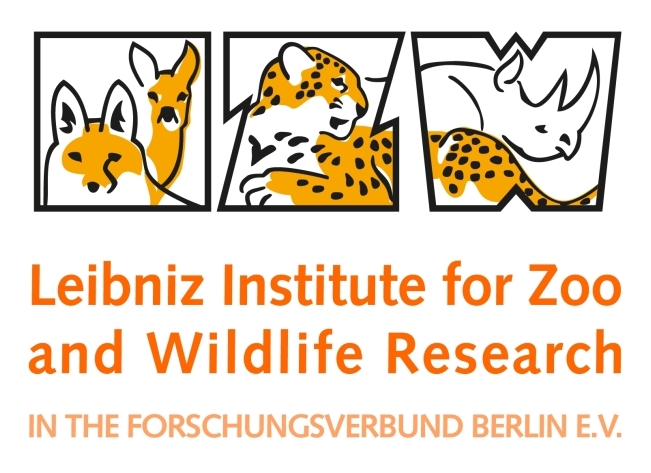
The Leibniz-IZW conducts evolutionary wildlife research to guide conservation actions. Our vision comprises two goals: (1) understanding adaptability of wildlife in the context of global change, and (2) designing appropriate conservation interventions to improve this adaptability. Our knowledge about the complex interplay between wildlife and their environment is still limited and it is therefore difficult to forecast the response of species to changes in their environment. Such forecasts are urgently needed in order to design appropriate conservation interventions and prioritise resource use for conservation.
Website: www.izw-berlin.de/en/

For articles on similar topics, please click one of the following options:
If you enjoyed this page, then you might also like:


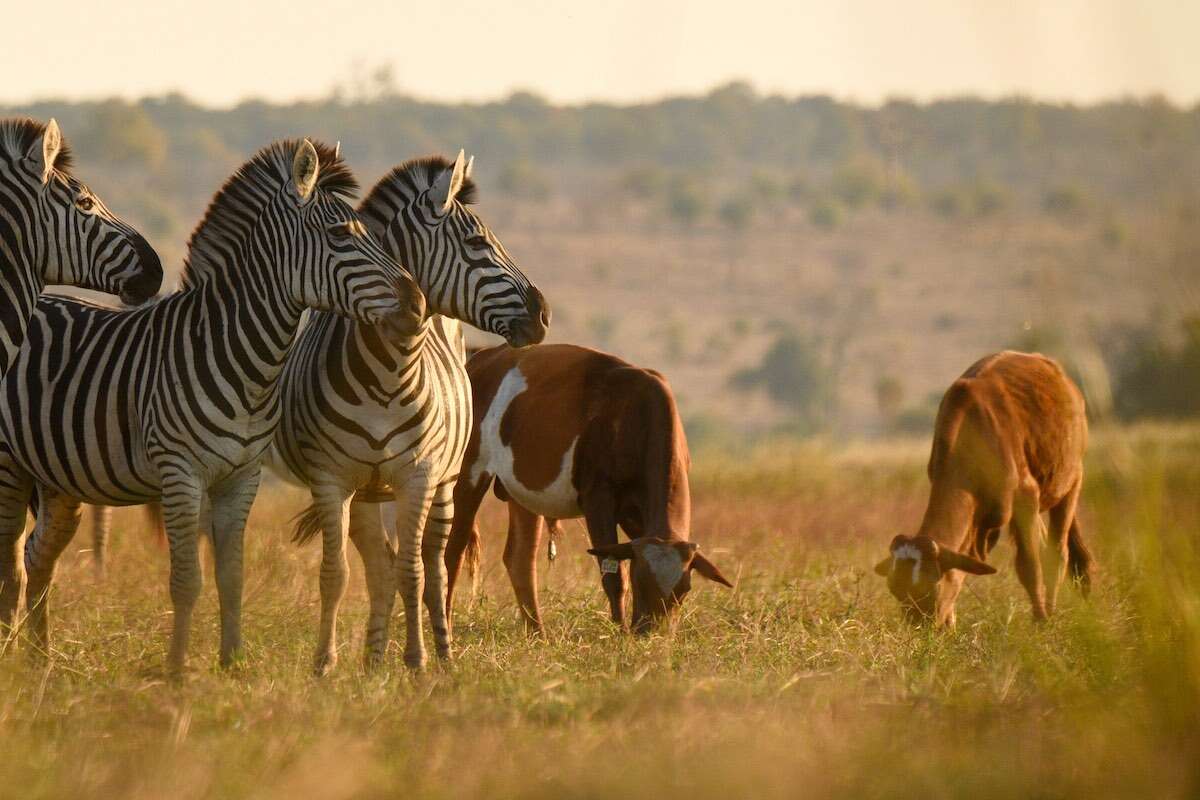
For more great articles from Conservation Namibia see below...
Conservation Namibia brought to you by:
We use cookies to monitor site usage and to help improve it. See our Privacy Policy for details. By continuing to use the site, you acknowledge acceptance of our policy.








